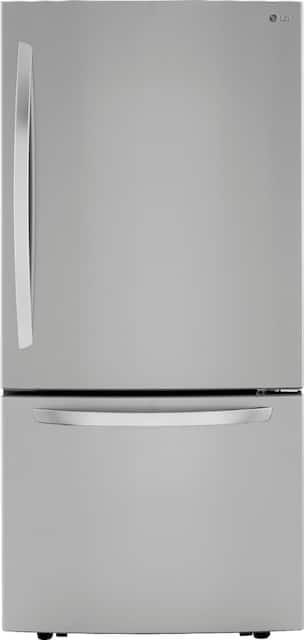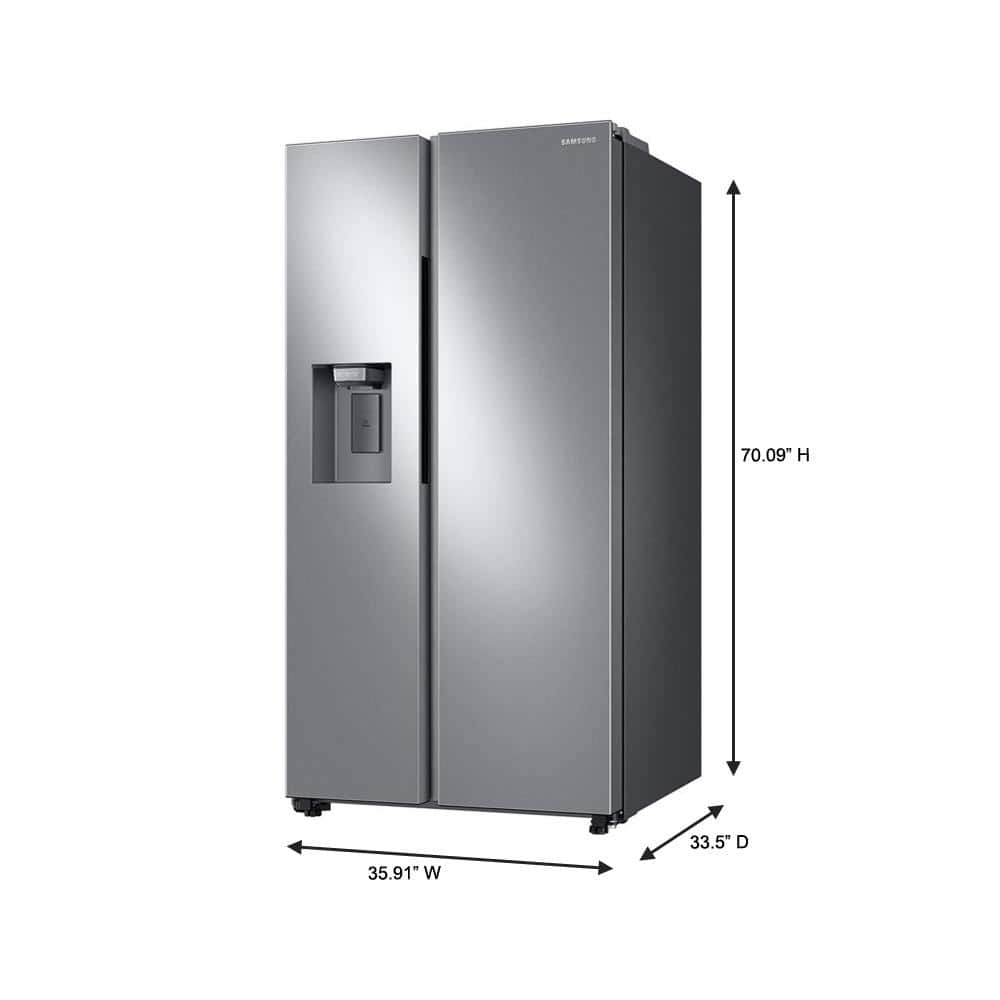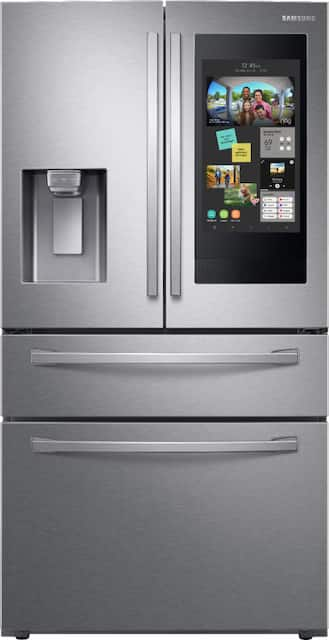A generous 26 cu. ft. of space gives you ample room for your needs. With contoured doors, hidden hinges, and a host of great interior features, such as Door Cooling+ and LED lighting give your refrigerator a look as sophisticated as it is functional.
Large capacity, 26 cu. ft. (bottom mount)
Stock up and store everything you need. With a cavernous 26 cu. ft. of space, this LG bottom mount refrigerator gives you ample space for all of your family’s favorite foods and keeps them conveniently organized within reach.
PrintProof™ finish
Beautiful, easy-to-clean finishes are fingerprint- and smudge-resistant.
Multi-Air Flow system
The Multi-Air Flow freshness system is designed to monitor and maintain conditions to help keep food fresh.
Door Cooling+ (top and bottom mount only)
The Door Cooling+ air duct helps keep door contents at peak freshness.
Smart Cooling® system
Designed to monitor and maintain conditions to help keep food fresh.
Premium LED lighting (recessed on top)
LED panels located on the rear of the refrigerator provide an exceptionally bright interior and save energy over traditional lighting.
SmartDiagnosis™
Troubleshoot quickly and efficiently with SmartDiagnosis™.
ENERGY STAR® qualified
Save money and energy with this ENERGY STAR® qualified LG refrigerator that exceeds energy standards.






by Akeke
It has certainly lived up to the LG motto! Life’s good!
by Sono
just the right size-although the delivery person did not level the fridge.
by Kita
Love new refrigerator plenty of room keeps everything cold love it
by Artur
Love the fridge, it’s massive, it has 25 cubic feet way more than my old one and it fits the same space. The only down fall is the ice maker, it works fine but it fills up the container too much so when I go to open the freezer the ice falls out in the back.
by Nelson
I waited over a year to get it. It is great! No water but I icemaker works well and plenty of space. All drawers can open even tho the fridge door only is able to open 90 degrees where I have it. I’m very happy with the purchase and the fridge. Lots of little storage spaces that would otherwise be unused.